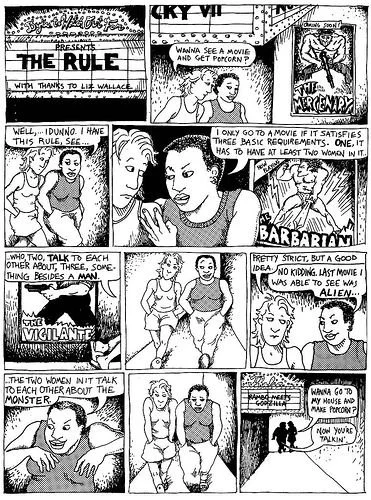5 September 2025
The term crisis actor originated in the emergency preparedness community and originally referred to professional actors available for hire to participate in disaster and mass casualty drills as victims, witnesses, criminals, etc. Hiring trained actors is thought to increase the realism and effectiveness of such drills. But after the December 2012 mass shooting at Sandy Hook Elementary School in Connecticut, the term took a darker, conspiratorial turn.
The earliest citation for the phrase that I have found is from the blog Crisisactors.org from 31 October 2012. This blog is no longer available on the internet (except via the Internet Archive Wayback Machine) for reasons that will become obvious. The blog post in question opens:
Active Shooter Crisis Actors Target Mall Shootings via Visionbox
DENVER, CO, October 31, 2012 — A new group of actors is now available nationwide for active shooter drills and mall shooting full-scale exercises, announced Visionbox, Denver’s leading professional actors studio.
Visionbox Crisis Actors are trained in criminal and victim behavior, and bring intense realism to simulated mass casualty incidents in public places.
After the 14 December 2012 mass shooting at the Sandy Hook Elementary School in Newtown, Connecticut, in which twenty children, aged six and seven, and six adult staff members were murdered, crisis actor took on a more sinister meaning. Conspiracy theorists began claiming that the shooting was staged, and that the family members of the dead children who appeared on television advocating for gun control were actually “crisis actors.”
Use of this conspiratorial sense of crisis actor was popularized by Alex Jones and his InfoWars fake news website. On 22 December 2012, just over a week after the shooting, Jones, using the Twitter handle @planetInfowars, tweeted “Active shooter crisis actors target malls,” a paraphrase of the Crisisactors.org headline from the previous October. When read in the context of Jones’s other work, it is clear that he was using the tweet to promote the conspiracy theory that the Sandy Hook shooting never happened and that the victims were just “crisis actors.”
Other conspiracy theorists picked up on Jones’s deranged ramblings and amplified his message. On 8 January 2013, the McClatchy news service reported on one such conspiracy theorist, one who, on paper at least, had credentials:
A communication professor known for conspiracy theories has stirred controversy at Florida Atlantic University with claims that last month's Newtown, Conn., school shootings did not happen as reported—or may not have happened at all.
Moreover, James Tracy asserts in radio interviews and on his memoryholeblog.com. that trained “crisis actors” may have been employed by the Obama administration in an effort to shape public opinion in favor of the event's true purpose: gun control.
The article is referencing a 1 January 2013 (revised on 4 January) blog post by Tracy that repeats the idea that the victims and their families are crisis actors and mentions Visionbox as a possible source for such actors.
A hint of the damage the conspiracy theory did can be seen in a 16 January 2013 article in the Christian Science Monitor. The article quotes Gene Rosen, who lived near the school and had given aid to several students on the day of the shooting, about the harassment he received by people who believed he was paid to give false accounts to the media:
“I don’t know what to do,” Rosen, a retired psychologist, told Salon. “I’m getting hang-up calls, I’m getting some calls, I’m getting e-mails with, not direct threats, but accusations that I’m lying, that I’m a crisis actor, ‘How much am I being paid?’”
In 2022, Jones was ordered to pay over $1.4 billion in damages to plaintiffs in a defamation lawsuit brought by victims of the shooting and their families. He lost control of his InfoWars media outlet and brand.
So the history of crisis actor is that of twisting a term denoting a useful function, that of performers who portray people in disaster situations in order to train first responders, to one designating participants in a fictional conspiracy.
There is an older, unremarkable sense of crisis actor that is unrelated to the above. It comes from the world of political science, where it refers to a decision-maker in an international crisis. This sense dates to at least 1968, when it appears in the Proceedings of the International Peace Research Association Second Conference:
McClelland argues that performance characteristics of crisis actors, both in crisis and non-crisis behavior, can be identified, and that phase characteristics of particular crises and of crises in general as one type of international behavior, can be distinguished.
While this sense is etymologically unrelated to the other, one cannot help but think its use has been skunked by the conspiracy theorists.
Sources:
@planetInfowars. Twitter.com (now X.com), 22 December 2012.
“Active Shooter Crisis Actors Target Mall Shootings via Visionbox.” Crisisactors.org. 31 October 2012. Archive.org.
Clary, Mike. “FAU Prof Stirs Controversy by Disputing Newtown Massacre.” McClatchy—Tribune Business News, 8 January 2013. ProQuest Wire Feed.
Edwins, Laura. “Sandy Hook ‘Truthers’ Harass Newtown Man, Conspiracy Theories Go Viral.” Christian Science Monitor, 16 January 2013, 7. ProQuest Newspapers.
Minix, Dean Alan. The Role of the Small Group in Foreign Policy Decision-Making: A Potential Pathology in Crisis Decisions? PhD dissertation, University of Cincinnati, 1979.
Oxford English Dictionary Online, 2022, s.v. crisis actor, n.
Smoker, Paul. “A Time Series Analysis of Sino-Indian Relations.” In Proceedings of the International Peace Research Association Second Conference, vol. 1. Assen, Netherlands: Van Gorcum, 1968, 250–74 at 254. Archive.org.
Tracy, James. “Sandy Hook Massacre Part II.” Memoryholeblog.com, 1 January 2013 (revised 4 January 2013). Archive.org.




